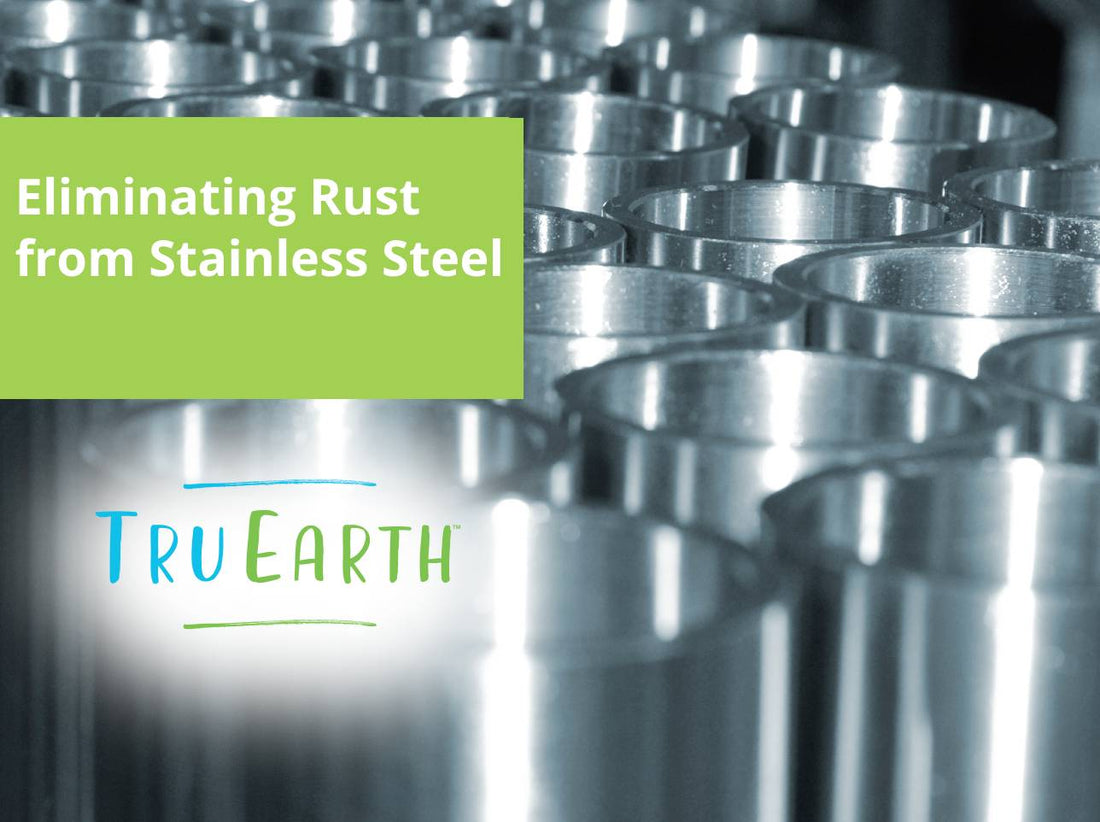Roestvrij staal wordt gewaardeerd om zijn corrosiebestendige eigenschappen, waardoor het een populaire keuze is voor diverse toepassingen, van keukenapparatuur tot buitenmeubilair. Ondanks de naam is roestvrij staal echter niet volledig ongevoelig voor roest.
Onder bepaalde omstandigheden kan roestvorming optreden op het oppervlak. In deze uitgebreide gids onderzoeken we de oorzaken van roest op roestvrij staal en geven we u effectieve technieken om roest te verwijderen en te voorkomen dat het terugkomt.

Het verband tussen roestvrij staal en roest
Voordat we de verwijderingsmethoden bespreken, is het cruciaal om te begrijpen waarom roestvrij staal, ondanks zijn weerstand, toch kan roesten. Roestvrij staal bestaat uit ijzer, chroom en nikkel. Het verhoogde chroomgehalte creëert over het algemeen een beschermende laag chroomoxide op het staaloppervlak, waardoor roestvorming wordt voorkomen. Verschillende factoren kunnen deze beschermende laag echter ondermijnen:
Zware omgevingsomstandigheden
Roestvrijstalen producten die in zware omstandigheden worden geïnstalleerd, zoals kustgebieden met een hoog zoutgehalte in de lucht, zijn gevoeliger voor roest.
Krassen en schaafwonden
Fysieke schade of diepe krassen kunnen de beschermlaag beschadigen en het onderliggende staal blootstellen aan roest.
Ingebedde ijzerdeeltjes
Vreemde ijzerdeeltjes, vaak afkomstig van gereedschap of andere materialen, kunnen in het roestvrij staal terechtkomen en plaatselijke roest veroorzaken.
Stilstaand water
Stilstaand water op roestvrijstalen oppervlakken kan roestvorming bevorderen. Goede drainage en regelmatig drogen zijn essentieel.
Veilige methoden voor roestverwijdering
- Zuiveringszout en water: Maak voor lichte oppervlakteroest een dikke pasta van zuiveringszout en water. Breng deze pasta aan op de aangetaste plek, laat het een paar uur intrekken en schrob het vervolgens met een niet-schurende spons of doek. Spoel af en droog grondig.
- Azijn : Witte azijn is een effectieve roestverwijderaar. Week een doek of keukenpapier in azijn, leg deze op de roestplek en laat het een paar uur intrekken. Schrob de plek voorzichtig om de roest te verwijderen, spoel en droog het vervolgens af.
- Citroen en zout: Maak een pasta van citroensap en zout. Breng dit mengsel aan op de roestplek en laat het een paar uur intrekken. Schrob met een doek of spons, spoel af en droog.
- Reinigers voor roestvrij staal: Commerciële reinigers voor roestvrij staal kunnen oppervlakteroest effectief verwijderen. Volg de instructies van het product voor het beste resultaat. Deze reinigers helpen ook de beschermlaag op het staal te herstellen.
- Schurende reinigingspads: Overweeg voor hardnekkige roest schuurpads die speciaal voor roestvrij staal zijn ontworpen. Zorg ervoor dat de schrobrichting overeenkomt met de oorspronkelijke nerf van het roestvrij staal.

Voorkomen van roest op roestvrij staal
Roest verwijderen is slechts het halve werk. Om te voorkomen dat roest terugkomt, kunt u de volgende maatregelen nemen:
Regelmatig schoonmaken
Het schoon en droog houden van roestvrijstalen oppervlakken is de belangrijkste bescherming tegen roest. Gebruik milde zeep en warm water om verontreinigingen en zure stoffen te verwijderen die de beschermlaag kunnen aantasten.
Gerichte reiniging
Volg bij het reinigen van roestvrij staal altijd de nerfrichting. Tegen de nerfrichting in schrobben kan kleine krasjes veroorzaken die de beschermlaag aantasten.
Passivering
In industriële omgevingen of na grondige roestverwijdering is passiveren een techniek om de beschermlaag van roestvast staal te herstellen. Dit proces omvat het behandelen van het staal met zuuroplossingen om oppervlakteverontreinigingen te verwijderen.
Beschermende coatings
Afhankelijk van de toepassing van roestvrij staal kan het aanbrengen van een beschermende coating de roestbestendigheid verder verbeteren. Minerale olie van voedingskwaliteit of speciale coatings voor roestvrij staal kunnen hierbij helpen.
Verwijder ingebed ijzer
Zorg ervoor dat er bij het werken met roestvrijstalen gereedschap geen ijzerdeeltjes in zitten. Inspecteer en reinig de stalen oppervlakken regelmatig om mogelijke roestproblemen te voorkomen.
Grondig drogen
Zorg er altijd voor dat uw roestvrij staal na reiniging of blootstelling aan vocht goed droogt. Stilstaand water of vocht kan roestvorming bevorderen.
Wanneer moet u een professional raadplegen?
Hoewel oppervlakteroest vaak met de hierboven beschreven methoden kan worden aangepakt, zijn er gevallen waarin professionele hulp noodzakelijk is. Als de roest uitgebreid is, steeds terugkomt of zich op cruciale roestvrijstalen onderdelen bevindt, is het raadzaam om professionals te raadplegen die gespecialiseerd zijn in de restauratie en passivering van roestvrij staal. Zij beschikken over de expertise en het gereedschap om complexere roestproblemen aan te pakken.

Houd uw roestvrij staal er als nieuw uit
Kortom, het begrijpen van de oorzaken van roest op roestvrij staal en het implementeren van effectieve roestverwijderings- en preventiemaatregelen is essentieel voor het behoud van de integriteit en esthetische aantrekkingskracht van roestvrijstalen oppervlakken. Met regelmatige verzorging en aandacht kunt u ervoor zorgen dat uw roestvrijstalen bezittingen roestvrij blijven en jarenlang hun duurzaamheid behouden.


